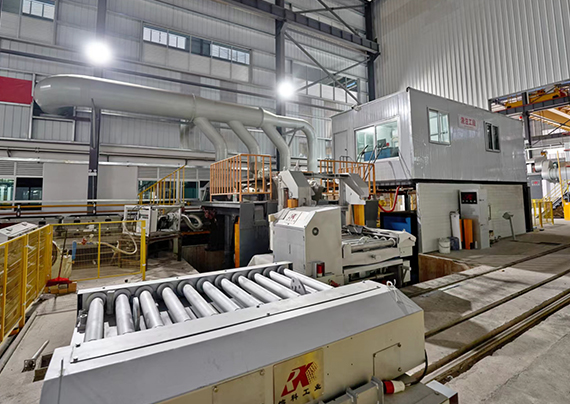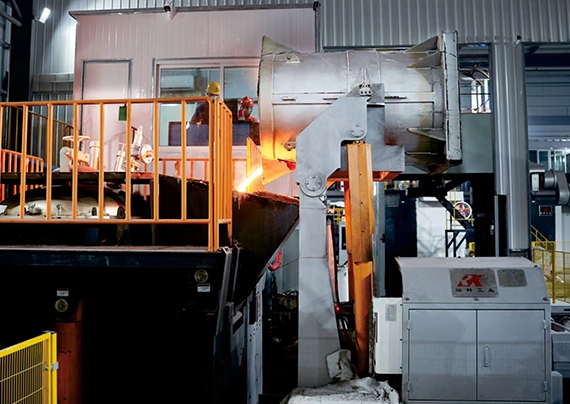
Melting Furnace: Shaping the World around Us
The introduction of Melting Furnaces
In the course of metal working there is an important piece of equipment that holds the reputation of the melting furnace. It’s the magical container in which the materials get the required temperature to become melted to be cast or moulded. If you have ever asked the question of how metals are melted or the various types of furnaces that exist this article will help you explore the area of furnaces.
What Is a Melting Furnace?
Fundamentally, a melting furnace is an industrial kiln that is specially used to melt metals or any other material that one wants. Used in lost foam casting, glass making, and heat treatment, these furnaces are necessary in different fields. They are of different kinds suited to different uses, namely, induction furnaces, electrical arc furnaces, and crucible furnaces.
Materials and Applications
Metal Melting
These furnaces are mainly associated with the process of melting metals [1]. Iron, steel, aluminium and copper converters are used to melt solid metal in such a way that it becomes easy to cast them.
Alloy Melting
The process of melting alloy is essential in situations where certain context properties of the metal are desirable. Since it is easy to melt and join metals to come up with alloys, they offer the best performance based on intended use.

Glass Melting
Molten furnaces are also used in glass production processes. Here for instance one needs high temperatures to melt the silica sand and other ingredients to produce the glass products we use every day.
Ceramic Melting
In ceramics, this furnace is useful in an attempt to reach the correct consistency and desirable properties for the end product. This process is essential for making the fine ceramic used for tableware and many other applications for the modern ceramic part used in engineering.
Major Characteristics of Melting Furnaces
Temperature Control
The main temperature control system of a melting furnace is a crucial consideration in the design of the equipment. A measure of temperature accuracy is vital and helps to obtain and sustain melting temperatures without burning or degrading materials.
Energy Efficiency
Today Intermediate Frequency Coreless Induction Furnace is outfitted with one of the best energy-conservation inventions. Additionally, this furnace employs techniques like induction heating or electric arcs that rely on energy and thus are consider environmentally friendly.
Safety Equipment
The word safety will always work for any manufacturing organization since safety is a crucial aspect when operating or managing any business. Melting furnaces have certain installation features like temperature control, a system to stop the furnace in case of emergencies, and protective lining to avert disasters.
Refractory Materials
On this factor, the furnace lining has a vital role as far as efficiency and safety are concerned. Refractory materials can sustain high temperatures and keep the designs of the furnace, hence improving their durability as well as efficiency.
Environmental Impact
The influence of these furnaces on the environment is considered one of the burgeoning concerns. Currently, many manufactories are trying to implement environmentally-conscious activities including, emission reduction, and recyclable materials. Organizations should thus embrace cost-effective furnaces that contribute to the reduction of pollution nonetheless preserving efficiency.

Maintenance of Melting Furnaces: A Key to Longevity
As with any other equipment used commonly in industries, this Intermediate Frequency Coreless Induction Furnace certainly benefit from being maintained hot on schedule. It’s important because if they are not smooth, they will compromise the performance and may cause safety issues as well as inefficiencies. In the following sections, there is a further breakdown of the sub-processes that are essential in the operation of a melting furnace.
Routine Inspections
Thus, it could be advocated that various forms of recurrent inspections must be conducted. Schedule regular checks on the following components:
• Temperature Control Systems: These systems have to work as expected to support the required melting temperature. Any change can result in poor melting processes or even deterioration of the material in the process.
• Furnace Linings: The refractory lining has the role of minimizing the wearing out of the furnace structure due to extreme heat. Peep for signs such as work, cracks, or deterioration and make sure to change any section that is unwell-maintained punctiliously.
• Safety Equipment: Some safety measures that ought to be checked frequently include; Emergency shut-off systems and temperature alarm buttons. That way, they can remain operational and reduce occurrences of accidents hence improving workplace safety.
Cleaning
Therefore maintaining the cleanliness of the furnace is of most importance in order to enhance its usage. Clean off any remaining, slag or debris that might form within or on the walls of the furnace. This makes it easy for heat transfer and prevents the melt-in materials from getting contaminated by the surroundings.
Lubrication
To maintain health in moving parts, they should always be lubricated. From time to time use the correct type of lubricants, which helps to keep messing the elements down and make sure that components work for as long as possible.
Growth and Stability of Supporting and Cooling Structures in Melting Furnaces
In the case of a melting furnace, the provision of adequate supporting and cooling structures is also essential in the operation. These systems not only improve performance but also make durability along with capital protection possible. Let’s delve into two key aspects: the reliable tilting system as well as a comprehensive cooling system.
High performance, low fluctuation furnace tilting mechanism
A reliable tilting system is considered to be a critical element in the functioning of industrial smelters. Such things as modern melting furnaces include a double hydraulic rod system for tilting. This design offers several advantages:
• Stability: The dual hydraulic system also works to maintain this position thus preventing any sort of flutter or vibrations that would be so detrimental to the pouring of the furnace. This stability is important when dealing with molten metals as this entailing can be dangerous if well handled.
• Multi-Directional Flexibility: You think the tilting system is a great advantage for multi-directional opening and closing with high accuracy to the operator. This capability allows for the right amount to be poured and minimizes chances of spills or even accidents.
• Strong Suction Capabilities: The suction features of the tilting system are even more enhanced, thus creating operational efficiency for the funnelling of molten metal with no losses.
Cooling System
Structurally, the cooling system of a melting furnace is specifically arranged to offer a long and stable duration of service. Here’s how it works:
• Enclosed Distilled Water: Distilled coolants enclosed flows through all components; the coolant flow is cleaned to reduce the risks of contamination affecting heat exchange. It helps in controlling the working temperatures in order to minimize possible costs such as the effects of heat.
• Temperature and Pressure Monitoring: Temperature and pressure control systems of the waterway are provided for each waterway. Real-time monitoring as per the above characteristics ensures that the equipment performs within safety limits and informs the operators when it is at risk.
• High-Quality Materials: The cooling system uses carbon-free rubber pipes by the famous German company Continental. It is efficient and higher quality pipes these help to increase the general effectiveness of cooling solutions.
• Leakage Alarm Integration: The cooling system shares a connection with the leakage alarm thus making it a closed-circuit safety system. This feature takes care of the equipment as well as the operators and by giving an immediate warning if any leakage occurs therefore action can be taken.
Conclusion
Melting furnace is the backbone of many industries, facilitating the transformation of raw materials into usable forms. For more information about melting furnaces and their applications, visit Rongke. Dive deeper into the world of industrial furnaces and discover how these vital machines can improve your processes.




